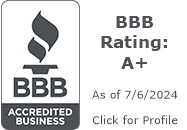If you’re involved in real estate investing, you’ve likely come across the term “1031 exchange.” A 1031 exchange, also known as a like-kind exchange, is a powerful tax-deferral tool that allows investors to sell one property and reinvest the proceeds into another without immediate tax liability. This strategy can be a game-changer for investors seeking to grow their portfolios while deferring capital gains taxes.
In this blog, we’ll break down what a 1031 exchange is, how it works, and the key benefits and rules to keep in mind when using it for real estate investment.
What Is a 1031 Exchange?
A 1031 exchange, named after Section 1031 of the Internal Revenue Code, allows real estate investors to defer capital gains taxes when selling a property as long as they reinvest the proceeds into another property of equal or greater value. The idea behind this provision is to encourage investment and growth without the burden of immediate tax obligations.
How a 1031 Exchange Works
The basic premise of a 1031 exchange is that you can defer paying capital gains tax when you exchange one investment property for another that qualifies as “like-kind.” While the term “like-kind” sounds restrictive, it broadly applies to most real estate used for investment purposes.
Steps in the 1031 Exchange Process:
- Sell Your Property: Start by selling your existing investment property. Keep in mind that it must qualify as a real estate investment property, not personal property.
- Identify a Replacement Property: Within 45 days of the sale, you must identify one or more potential replacement properties. This is a crucial deadline in the process.
- Close on the Replacement Property: You have 180 days from the sale of your original property to close on the new one. The entire process must be handled according to specific IRS rules to ensure the tax deferral.
Key Rules to Follow for a 1031 Exchange
To successfully complete a 1031 exchange, there are several rules you must follow:
- Like-Kind Property: The replacement property must be of a similar nature or character, but not necessarily the same quality or grade. For example, you can exchange an apartment building for a retail space, as both are real estate investments.
- Timing Requirements: The 45-day identification and 180-day closing windows are strictly enforced. Failure to meet these deadlines can disqualify your exchange.
- Use of a Qualified Intermediary (QI): The IRS requires that a neutral third party, known as a qualified intermediary, facilitates the exchange. The QI holds the sale proceeds during the exchange process to ensure compliance with IRS regulations.
Benefits of a 1031 Exchange
- Tax Deferral: The most significant benefit of a 1031 exchange is the ability to defer capital gains taxes, allowing you to reinvest more of your profits.
- Portfolio Growth: By deferring taxes, you can use the full value of your sale to purchase a larger or more profitable property, enabling you to grow your investment portfolio faster.
- Flexibility: You can exchange different types of properties, such as upgrading from a small residential building to a commercial property or diversifying into other areas of real estate investment.
- Estate Planning Advantages: A 1031 exchange can also be used as part of an estate planning strategy, allowing investors to pass on properties to heirs with a stepped-up tax basis.
Potential Drawbacks to Consider
While a 1031 exchange offers significant advantages, it’s not without potential downsides:
- Strict Rules and Deadlines: Missing any deadlines or not following the proper procedures can result in disqualification, and the tax deferral will be lost.
- No Immediate Profit Access: Since the goal of a 1031 exchange is to reinvest, you won’t be able to access the proceeds from the sale for personal use without triggering taxes.
- Limited to Investment Properties: A 1031 exchange applies only to properties used for business or investment purposes, meaning personal residences do not qualify.
Conclusion
The 1031 exchange is an excellent tool for real estate investors looking to grow their portfolios while deferring capital gains taxes. However, it requires careful planning, strict adherence to deadlines, and the use of a qualified intermediary. If you’re considering using a 1031 exchange, it’s essential to work with experienced professionals to navigate the process and maximize the benefits. Always consult with a tax advisor to ensure the strategy aligns with your financial goals.
Disclaimer
This blog is for informational purposes only and should not be taken as legal or tax advice. Please consult a tax professional or legal advisor to discuss your specific situation.






